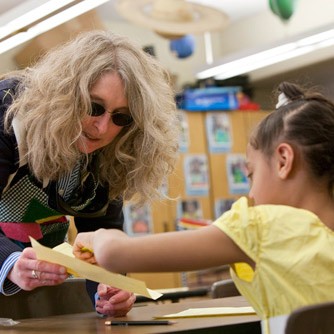Giving more than grades

Jul 28, 2011
“I don’t know how students can afford to go to school now,” said Nancy Mack, professor of mathematics at Grand Valley State University. “These kids today have to work so many jobs and so many hours that they don’t have time to enjoy learning.” Mack is part of the 51 percent of GVSU faculty and staff that contributed in the Faculty and Staff Campaign, raising funds to give back to the students and the university.
“It’s a sense of pride for me,” she said. “I have always enjoyed learning and I believe in learning. I want my students to have the same opportunity to enjoy learning like I did.”
GVSU faculty and staff set a record this year, donating $969,814 back to university programs. This money will go back to students in the form of endowments and scholarships offered by GVSU as well as services for students like free tutoring. This campaign began in 1983 and has been a staple of the yearly campaign to help GVSU battle reduced government funding. The overall campaign, titled Shaping Our Future, focuses on provided cutting edge technology, services and education for every student.
In the past, the Faculty and Staff Campaign was fairly vague, but Mack said that in her 10 years at GVSU, the university has gotten better about telling donors where there funds are going, which has influenced her desire to give.
This year’s theme, 50 Reasons to Give, accentuates the desire and dedication of those employed by GVSU.
“I don’t have just one,” Mack said of her reason for giving. “I know I’m repeating myself, but it’s the love of learning and opportunity for my students.”
In her spare time, Mack also serves local elementary schools as a volunteer. Her commitment to education, at all levels, has earned the respect of peers and recognition by the university.
GVSU has some of the lowest tuition rates in the state, partially because of the generosity of the professors and staff on campus. Last year, a similar rate of 51 percent of faculty and staff gave to the fundraising effort, but at that point faculty operated under a pay freeze. Mack said that statistic shows how much the professors at GVSU care about the mission of the university.
“I didn’t know how much we raised, but that is amazing,” she said. She went on to say that the way money is allocated by the university helps so many students, but insisted that helping just one was worth the effort.
Each donation is anonymous to the public, except for the list that goes on campus literature for disclosure purposes. Funds are solicited by mail and anyone who wishes to give simply fills out the card and encloses a check. The funds can be allocated in any way the donor wishes. This allows professors to donate to their department and therefore further their own goals for the education of the students. In Mack’s case, her contributions have been split. She donated both to the general fund of GVSU’s student programs and also funded a $2,000 private scholarship she established two years ago for math majors at GVSU.
“I save up all year long for this,” she said. “It makes me happy that I can take a little of the burden off a student, even if it’s only a couple thousand dollars.” The effort of professors like Mack on campus is something that is being showcased by the university in their yearly literature for donators.
“It’s rare to have a professor with their own personal scholarship fund,” Mack said of her own effort. “However, it is something that I feel we owe the students. This is the best place (campus) I have ever been a part of. It feels like we’re in it together and I think that is because we’re so small.”
Mack said that when she attended the University of Texas as a radio and television production major, her tuition was just $230 each semester. She reflected, saying that if the pressures of today’s students simply weren’t there when she was a student.
“It’s sad,” she said of the inflated tuition rates of educational institutions. “I’ve had students come through my class who are making choices of whether they eat, or their children eat, and buying the book for the course. It shouldn’t have to be that way. If we can lessen the burden on the student and help them embrace the opportunity for learning and education, it’s the least we can do.”





















